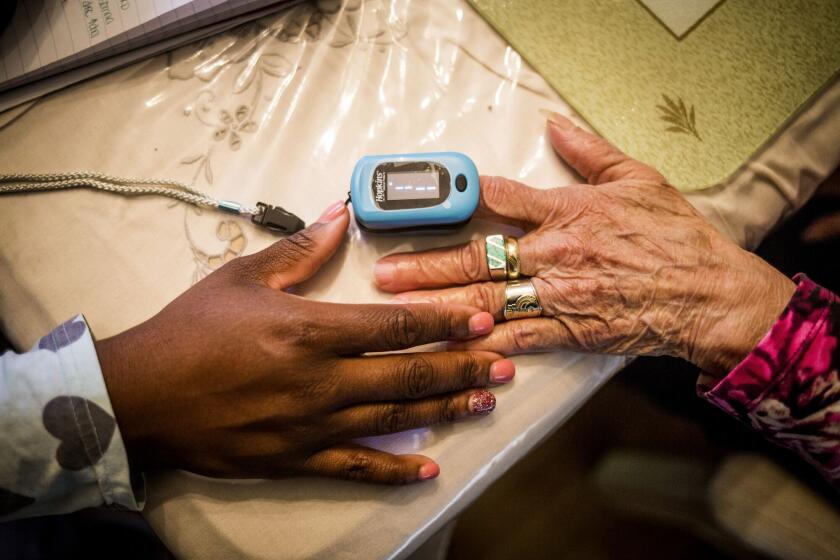Home Improvement : Putting a New Spin on Ventilating the Attic : Turbines: They look like chef’s hats, but they are effective in cooling the house without running up energy bills.
- Share via
We have all seen them, those strange looking “chef’s hats” spinning on the roofs of all kinds of buildings. What are they you may have wondered?
They are called wind-driven turbine ventilators and are, perhaps, one of the best investments for home comfort and energy savings you can make if you have an attic.
“Wind-driven turbine ventilators can substantially reduce home cooling costs by decreasing a home’s attic temperature without using household energy,” according to Builders Emporium’s answer man Pop Larson.
Here is how they work:
On a hot day, a normally vented attic (one that has eave and gable vents installed as per building code requirements) can be anywhere from 15 to 40 degrees hotter than the outside temperature.
This heat is transmitted to the living space through the ceiling, resulting in an inside temperature of the home often greater than the temperature outside. Also, the excess attic heat can keep the house hot even after the sun goes down.
Naturally, this makes your air conditioner work harder than necessary, costing you money.
Since heat rises, the turbine ventilators are installed near the high point of the attic to allow the hottest air to escape and create a flow of cool air through the existing vents up through the turbine.
The turbines are made of lightweight aluminum and fit over a hole cut in the roof. They are built with lifetime lubricated bearings that allow them to silently spin in the slightest breeze, and as they do, they “draw” the air out of the attic without hookup to any household energy source. It’s essentially free cooling.
They are designed to deflect even the heaviest rainfall from entering the attic even if they are not turning, and their smooth metal surfaces and closely spaced openings keep rodents from entering.
The only caveat to satisfactory use of the turbines is proper eave and/or gable venting.
Since the turbines allow a flow of air through existing vents, you must make sure that your house has a substantial number of screened vents (roughly 4-x-16 inches) under the eaves or large vents at the gable ends before considering installing turbines.
Although it is difficult to quantify the level of energy savings or attic temperature reduction from one house to another, it is safe to say that most any attic will be cooler.
For example, I have a turbine ventilator on my own home and I did an experiment recently in which I measured the attic temperature on a hot day and found it to be 95 degrees.
I covered the turbine with a trash bag and checked the temperature 30 minutes later and found it to be 110 degrees.
Determining the number of turbines needed in your home is a function of the attic square footage. Most manufacturers recommend one 14-inch vent for each 1,000 square feet of attic.
One common question asked about the turbines is “Will my house be colder in the winter with the turbines in place?”
Many hardware stores sell turbine covers designed to keep heat in during the winter. However, the turbine manufacturers recommend against covering them because of the risk of damage to the bearing or frame.
They point out that in a properly insulated home the heat lost through the turbine(s) will be negligible. Also, the added ventilation in winter helps reduce wood damaging condensation in the attic, the benefit of which greatly overshadows any small heating cost increase.
The one downside to the turbines is that they do not add to the appearance of the roof. Therefore, it is important to place them where they will not be seen from the street, if possible.
My own turbine is set on the back-yard side of the roof ridgeline, about a foot from the roof’s high point so the top of the turbine is not seen from the front of the house. It is painted (as any turbine can be) to match the color of the roof to help camouflage it.
The turbines are available in two sizes, 12 and 14 inches, although I usually recommend only the 14-inch size.
Most brands sell for under $50 at major hardware stores and home centers.
Although it is easiest to install the turbines on a flat, asphalt-shingle or wood-shake roof, they can go on any type of roof provided there is an attic below. Most retailers can recommend individuals or service companies that can handle the job.
More to Read
Inside the business of entertainment
The Wide Shot brings you news, analysis and insights on everything from streaming wars to production — and what it all means for the future.
You may occasionally receive promotional content from the Los Angeles Times.










